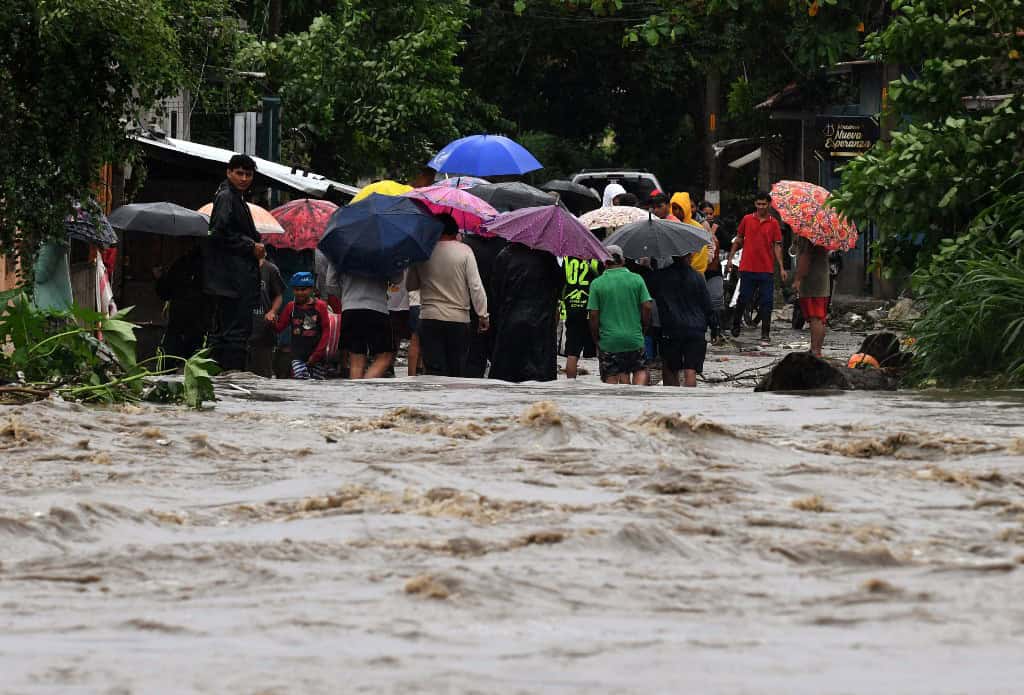The United States’ National Hurricane Center (NHC) reported that the storm is moving at a speed of 4 km/h with maximum sustained winds of 85 km/h, heading west “near the northern coast of Honduras. “According to the NHC, “it will then move inland in Belize,” where the government is preparing shelters for potential impacts of the storm.
Sara has affected 45,329 people in Honduras, with over a thousand displaced or taken to shelters, according to the Secretariat for Risk Management and National Contingencies (Copeco). Three people who went missing at sea in the Gracias a Dios department, inhabited by indigenous Miskito people, were also rescued.
In Costa Rica, the northwestern tourist province of Guanacaste is one of the hardest-hit areas, with flooding of crops and homes, road closures, and the shutdown of its local airport. In southern Costa Rica, near the Panamanian border, river overflows have left entire communities isolated. Three major routes in the country have been impacted by landslides.
Emergency in Costa Rica and Honduras
The entire Pacific coast of Costa Rica, where Guanacaste is located, is under a red alert, and the country has been in a state of emergency since Thursday. Rains over the past two weeks, before Sara’s arrival, caused three deaths, five disappearances, and 2,106 people to be displaced to shelters in Costa Rica. The government has suspended classes.
In Honduras, President Xiomara Castro declared a “national emergency” in a Council of Ministers meeting on Friday to expedite aid to those affected. Copeco declared a red alert in four Caribbean departments (Bay Islands, Atlántida, Gracias a Dios, and Colón) until noon on Saturday.
On the Caribbean coast of Honduras, winds caused rough seas in La Ceiba, Puerto Cortés, and the paradisiacal Bay Islands. The heavy rains flooded streets in northern cities, particularly in Roatán, the capital of the Bay Islands, as well as La Ceiba—where part of a bridge collapsed—and Tocoa, on the mainland.
The government suspended in-person work, shifting to virtual operations, and closed airports in Roatán, La Ceiba, and Tegucigalpa. In cities like San Pedro Sula, the country’s second-largest city, heavy rains have been falling since Thursday, with intermittent showers in the capital.
Impacts on the Rest of Central America
In Guatemala, the center of the town of Melchor de Mencos in the north, near the Belizean border, was flooded, according to the National Coordinator for Disaster Reduction. Rains generated by Tropical Storm Sara “are causing the collapse of water sources,” and some homes have been flooded, forcing residents to seek shelter with neighbors and family, according to civil protection authorities.
In Nicaragua, the government declared a “yellow alert throughout the territory.” The bad weather has caused river levels to rise. In Panama, the country was recovering on Friday from heavy seasonal rains prior to Sara’s arrival, which caused at least 11 deaths and $100 million in losses due to flooding and infrastructure collapses.
The storm is having a lesser impact on El Salvador, but civil defense authorities are monitoring the potential for increased rainfall over the weekend. Each year, the rainy season causes dozens to hundreds of deaths and significant infrastructure damage in Central America, one of the region’s most vulnerable to climate change.








